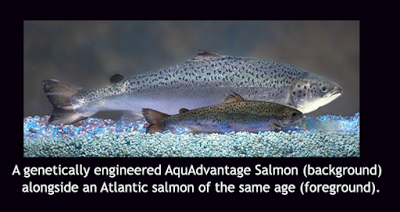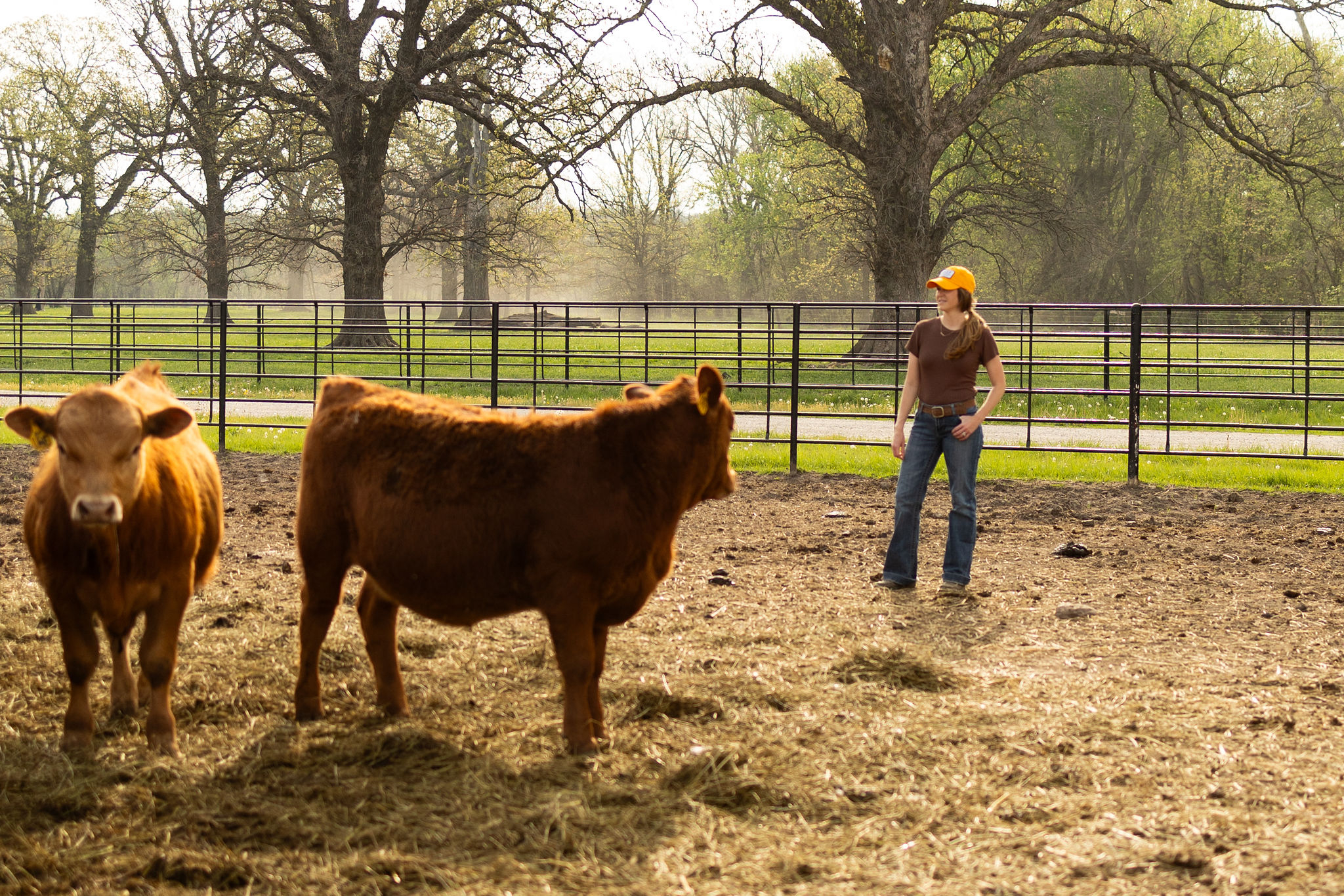 |
| A GMO salmon from AquaBounty in the background, alongside a non-GMO Atlantic salmon. Image courtesy www.alaskafishradio.com |
In a historic move by the FDA, the first-ever genetically engineered animal was approved safe for human consumption this week: the GMO salmon, which some people have unlovingly deemed “Frankenfish.” #notnice. I’ve actually blogged about this before, and my feelings about GMO salmon, which are officially called AquAdvantage salmon, are the same. However, before we all get up in hackles about this scientific breakthrough that has been 20 years in the making, let’s take a minute to review some common, proven knowledge about GMOs or genetically engineered foods.
Q: What is a GMO?
A: It stands for genetically modified organism, which is a common term for genetically engineered food.
Q: Ok – what is genetically engineered food?
A: These are organisms that have had genes altered to give the plant (and now salmon) an ability it didn’t have before. For example, herbicide tolerance in soybeans. The GMO salmon have been altered so that the fish can continue to grow in colder months whereas non-GMO salmon shut down the growth process when the water gets cold.
Q: Why do we use GMOs?
A: Farmers are able to save time and inputs (i.e. insecticides and pesticides) by using GMO seeds. Farmers select GMO seeds to reduce yield loss or crop damage from weeds, diseases, insects and extreme weather conditions. Essentially, GMOs allow farmers to produce more food using fewer inputs or resources.
Q: Are GMOs safe?
A: Absolutely. Today’s genetically engineered products are the most researched and tested agricultural products in history. On average, GMOs take 13 years and $130 million of research and development before they are introduced to the market. The regulatory process alone can take 5-7 years.
Q: What genetically engineered foods are on the market now?
A: There are currently nine crops commercially available in the U.S. – alfalfa, canola, corn, cotton, papaya, potatoes, soybeans, squash and sugarbeets. GMO apples have been approved and are coming to market soon. And of course, there is our newest GMO success story, the GMO salmon which will be coming to market at some point in the future.
Which brings me to the subject of genetically engineered salmon. There are many pros to genetically engineering fish and of course, there a potential cons. Here’s an easy list to break it down:
Pros
- The GMO salmon, also called AquAdvantage, has been modified for fast growth during colder temperatures. A wild salmon’s growth cycle slows down when water is cold in the winter, however by using a promoter gene from an ocean pout, the salmon continue to grow. Larger fish, more quickly equals more food, quickly.
- The GMO salmon requires no antibiotics, unlike non-GMO salmon.
- AquAdvantage salmon reach adult size twice as fast and require 20% less feed than today’s Atlantic salmon.
- The food from GMO salmon is just as safe as food from any other Atlantic salmon.
- The development and approval of GMO salmon will help address a food problem in the world.
- Global demand of fish is expected to double by 2050 and farmed fish (GMO salmon and Atlantic salmon are both farmed) can help meet that need.
Cons
- A big red flag to critics is the chance of GMO salmon interbreeding with wild salmon. However, the FDA has only allowed the fish to be raised in one penned-off lake in the Panamanian mountains. To escape, the salmon would have to get out of the lake, swim down river and then continue in to the ocean where they would swim thousands of miles to arrive in the North Pacific or North Atlantic. Not impossible, but highly unlikely. If by chance, the escape proved successful, there would still be the issue of interbreeding, which scientists have taken care of by making all of the fish female AND sterile.
There you have it – the fast facts on GMO salmon. I can honestly say that I have no fear of my food in regards to genetically engineered organisms. If GMOs help us feed a hungry world, reduce our environmental impact and use fewer resources, I am all for them. Bravo to the FDA for approving this awesome GMO food that can help the world food problem. What’s next?
To learn more about other GMO foods such as the arctic apple, visit GMOAnswers.com.
Until next time,
~ Buzzard ~



